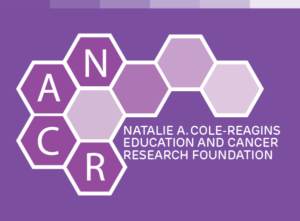D3b Provides Vital Framework to Advance Research into Sinonasal Cancers
 The impact of hard work and expertise at the Children’s Hospital of Philadelphia (CHOP)’s Center for Data Driven Discovery in Biomedicine (D3b) continues with inspiring updates from the Cole-Reagins Registry for Sinonasal Cancer (CORSICA) project, a translational research study focused on enhancing the study of sinonasal cancer. Initiated at Stanford University and funded by the Natlie A. Cole-Reagins Family Foundation, CORSICA has grown into a powerful research study effort that links biospecimens from sinus cancers to a clinical registry to assess long-term outcomes across 10 study sites nationwide. Specimen collection and biobanking efforts are supported by the D3b Center. D3b platforms are integrating multiomic and imaging data into CORSICA’s robust clinical and outcomes data to make CORSICA a leader in creating an ecosystem of discovery for Sinonasal Cancers. The team at D3b is not only integral to the advancement of this work, but to the growing body of knowledge and best practices related to cancer databases.
The impact of hard work and expertise at the Children’s Hospital of Philadelphia (CHOP)’s Center for Data Driven Discovery in Biomedicine (D3b) continues with inspiring updates from the Cole-Reagins Registry for Sinonasal Cancer (CORSICA) project, a translational research study focused on enhancing the study of sinonasal cancer. Initiated at Stanford University and funded by the Natlie A. Cole-Reagins Family Foundation, CORSICA has grown into a powerful research study effort that links biospecimens from sinus cancers to a clinical registry to assess long-term outcomes across 10 study sites nationwide. Specimen collection and biobanking efforts are supported by the D3b Center. D3b platforms are integrating multiomic and imaging data into CORSICA’s robust clinical and outcomes data to make CORSICA a leader in creating an ecosystem of discovery for Sinonasal Cancers. The team at D3b is not only integral to the advancement of this work, but to the growing body of knowledge and best practices related to cancer databases.
The CORSICA team is excited to announce that this multi-institutional effort has surpassed 100 patients with tumor samples and over 450 with clinical data. This number is particularly impressive due to the rarity of sinonasal cancers, with some study sites encountering only a handful of cases per year. Collaboration, resource sharing, and innovation are at the core of this milestone and the team is excited to continue growing and expanding their efforts.
A project like CORSICA is important for this type of cancer, as cases and opportunities for biospecimen collection are rare. Cancers in the nose and sinus affect 0.5-1 in every 100,000 patients. Many of the early symptoms of sinonasal cancers, such as congestion and facial pressure, nosebleeds, and increased nasal drainage are similar to other nasal problems. These similarities can often lead to delayed care and misdiagnosis. Enhanced understanding of genetic factors and the cell microenvironment of such cancers, facilitated through resources like CORSICA, could lead to earlier diagnoses, new treatment options, and better outcomes for patients.

This study was initiated at Stanford University by Dr. Peter Hwang, whose team began collecting data related to treatment, survival rates, and quality of life for newly diagnosed sinonasal cancer patients across five study sites. With the rarity of sinonasal cancers, cross-institutional collaboration is key to pushing studies forward and since its inception has expanded to 10 participating sites, including Penn, Mayo Clinic, Pittsburgh and UCLA. Their registry uses cloud-based computing to evaluate treatment outcomes for the patients enrolled.
While this study focuses on adult patients, D3b Co-Directors Dr. Phillip “Jay” Storm and Dr. Adam Resnick saw an opportunity to use tools and workflows developed through the CHOP-led Children’s Brain Tumor Network (CBTN) to bolster Dr. Hwang’s work with biospecimen collection. Together, the collaboration hopes to be a model for future registry development in the field of otolaryngology.
“I learned about CORSICA from my University of Pennsylvania colleagues, Jim Palmer and Nithin Adappa,” Storm said. Drs. Palmer and Adappa are Rhinologists who partnered with Storm to develop CHOPs endonasal skull base program. “We were banking all of our pediatric brain skull base tumors that we removed at CHOP as part of our international consortium, CBTN. Jim and Nithin told me about the CORSICA initiative that Peter Hwang was leading out of Stanford, and suggested that Adam Resnick and I speak with Peter to discuss how we could use our D3b biospecimen infrastructure to support CORSICA’s efforts.”
Sinonasal malignancies, like pediatric brain tumors, are rare diseases and advances will only come through consortia like CORSICA that share data and biospecimens. “It was a natural partnership” Peter Hwang said. “We had expertise in clinical data registries and D3b had expertise in biobanking and bioinformatics to do multiomic analyses.” The timing could not have been better.
One of Dr. Palmer’s patients, Harlan Stone, wanted to support a multi-institutional effort that focused on biospecimens, bioinformatics, and big data that was linked to clinical data. “I knew the partnership between CORSICA and D3b was exactly what Mr. Stone wanted to support,” Palmer said. “We had Peter Hwang and Adam Resnick present to Mr. Stone and he immediately saw the power in the partnership and he generously provided the initial funding to allow us to start collecting biospecimens.”
Dr. Hwang’s team at Stanford remains in charge of the clinical management of this project with D3b as the biospecimen repository and genomic data management center. All participating studies send their samples to the D3b team to be processed and stored in CHOP’s Biorepository Core (BioRC). The BioRC has a capacity for approximately 2-3 million samples and the facility is designed for preserving a broad array of precious biological materials.
The experience and knowledge brought to CORSICA by D3b can be seen throughout the processing of samples across all 10 collaborating institutions. Collaboration goes well beyond the physical retrieval and storage of samples. The standards developed and improved by CHOP and D3b through projects like CBTN can be seen being implemented by our CCRC team throughout every step from prep to shipment to the integration of samples into the registry.

CHOP, D3b
Clinical Research Program Manager
With teams across the country collecting and sending samples to be stored, the continued communication, training, and support provided to participating institutions by the D3b team is the key to success. Kaitlin Lehmann is the Program Manager that oversees a team of Clinical Research Coordinators (CRC) and the daily operations. Stephanie McGrory manages data projects and ongoing sequencing efforts. Alexa Plisiewicz serves as the D3b CRC, prepping and supporting study site participants through their Internal Review Boards, assuring all protocols related to legal and patient consent are done effectively. As the project has advanced and grown, so has the team, with Lauren Seip as the Biospecimen Coordinator.
“As with all consortiums based within D3b, it is standard to implement measures for consistency and harmony in CORSICA,” said Plisiewicz. “Detailed training, heightened documentation, and meticulous quality control measures are foundational to meeting this goal on the operations team.”
Seip added, “D3b understands the financial burden that collecting samples for research can present. To help with this burden, we provide CORSICA sites with all the supplies they need at no cost. From cryovials to FedEx waybills and specimen shippers, we regularly supply our external sites with whatever they might need in order to participate in this collaborative biobanking effort.”
Now that the CORSICA project has surpassed the important 100-participant milestone, the next steps include the continued analysis of the molecular characteristics of the samples. This evolving project will be multi-modal, including imaging whole genome sequences, whole exome sequences, and methylation samples, as well as the integration of clinical and imaging data.
“It’s incredibly exciting to see the advancement of treating sinonasal cancer after many years of hard work to get to this point of sequencing these rare, precious samples,” concluded Kaitlyn Lehmann. “It would not be possible without the collaboration of our institutions and the dedication of a fantastic coordinating team.”
